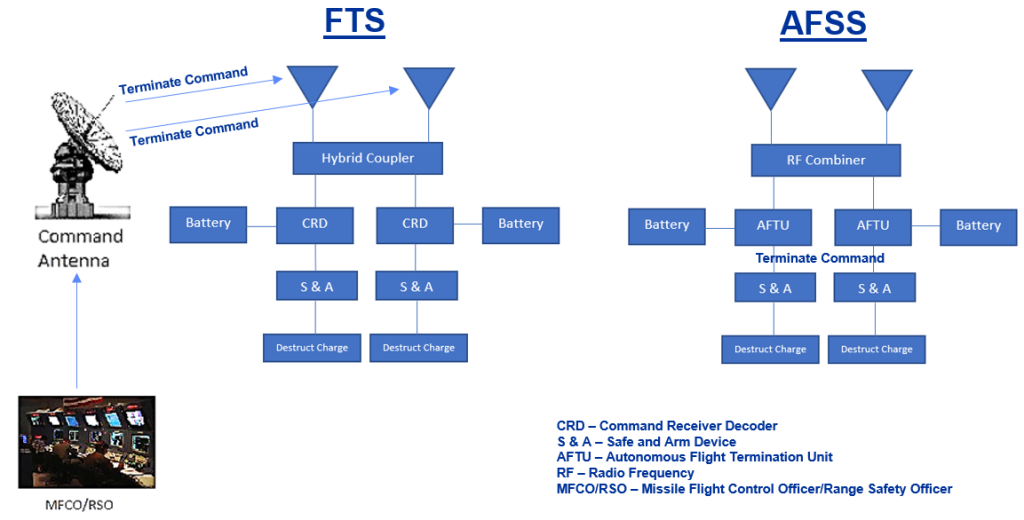
NASA Flight Termination System (FTS) Design Requirements
FTS Design
– FTS must render each power stage and / or any other propulsion system, including any that are part of a payload, non-propulsive
– If flight analysis determines the public is not endangered, an FTS may not be required
Good FTS Design Features include:
– Redundancy
– Physical separation of redundant strings
– Independence from other vehicle systems
– Inadvertent separation destruct system when solid rocket motors used
– Both engine shutdown and destruct capability on liquid fueled vehicles
– Feathers that allow complete and thorough (end-to-end) testing
Test Requirements for approval of FTS
– Component level: Qualification, acceptance and lot testing
– System level: Pre-launch confidence tests and end-to-end verification
– Typical components of an airbourne FTS

FTS Ground Systems consist of redundant UHF transmitters capable of sending command destruct signals
FTS reliability goal: 0.999 @ 95% confidence
Considerations during design – all these directly influence Ec
Reliability – Hardware / software failure rates and redundancy | Propellants – Affects blast and toxic analyses and ground hazards | Trajectories – Affects “at risk” population | Range selection – Affects ground, sea and air hazard zones